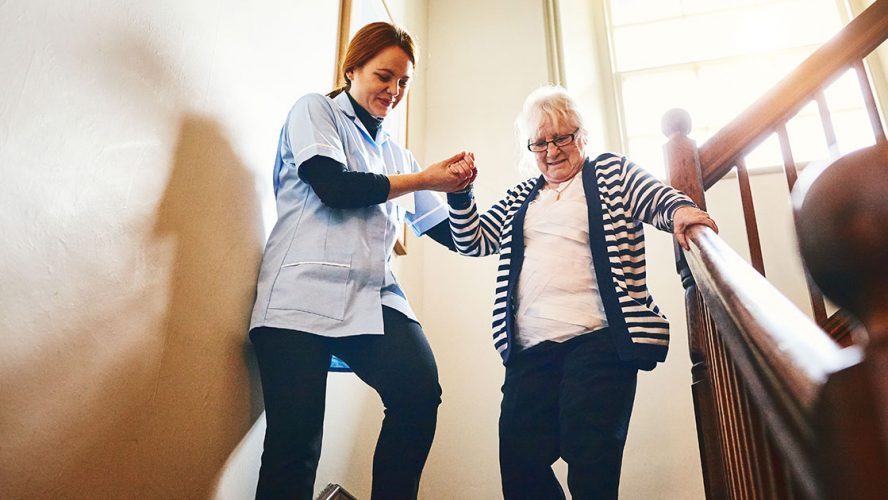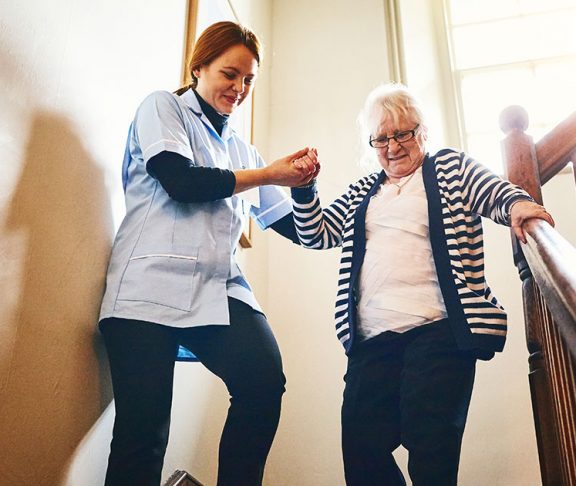Caregivers provide an essential backstop to our health care system. Those taking care of their friends and family members allow people needing care to stay in their homes longer, thereby delaying or avoiding the financial and emotional costs of long-term care. As the population dynamics change and the baby boomer generation ages, there will be more demand for caregivers. However, it is precisely these changes in family dynamics — smaller family size, more childless adults — that will leave older Americans with fewer potential caregivers.
Although being a caregiver has many benefits, including closeness to the care partner and a feeling of satisfaction from knowing that you can be of help, it can also be stressful and difficult. Compared to people who are not caregivers, most studies have found that caregivers report poorer health. Many caregivers neglect their own health to better serve their care partner, but in the long run, this can cause problems for both.
At the Centers for Disease Control and Prevention (CDC), we have been gathering information about family (unpaid) caregivers, the persons they are caring for, the length and intensity of their caregiving, as well as the type of things they do for their care partners, through the Behavioral Risk Factor Surveillance System (BRFSS). The BRFSS is the largest continuously operated (since 1984) health survey by telephone in the world, interviewing over 400,000 adults annually in all 50 states and seven U.S. territories. By collecting this information, we are able to deliver a snapshot of caregiving in the United States on a state-by-state level, providing local health departments and state governments with valuable information to assist them in planning and better serving caregivers. In addition, because the BRFSS contains a wide range of data on health status and health risk behaviors, we are able to analyze the health of caregivers to determine the overall burden of caregiving.
To make this information from the BRFSS more readily available, the Alzheimer’s Disease and Healthy Aging Program at the CDC has established a data portal for the public. Through this portal, anyone can create a custom report on caregivers with a few clicks of their mouse. Users can generate reports broken down by age, location and other demographic characteristics, to produce custom charts and graphics effortlessly.
Family caregivers add unique and necessary services to the health care system, which will only be more necessary as the population ages. To provide caregivers with meaningful supports, we need to understand them and the characteristics of their caregiving situations. Collecting and using data from sources such as the BRFSS is an important first step in creating meaningful programs to provide support and services for caregivers, and to help maintain their health and wellbeing, as well as those who depend upon them for care.
Here are 5 things you might not know about Alzheimer’s caregivers today:
1. One in five
About 20 percent of Americans say that they have provided care for a friend or family member in the past month.
2. Eyeing the future
Over 15 percent of Americans who are not currently caregivers expect to become caregivers in the next five years.
3. Measuring age gap
Among caregivers who care for persons with Alzheimer’s disease or related dementia, about 25 percent are aged 65 years or older, whereas less than 20 percent of caregivers who care for persons with other illnesses or problems are aged 65 years or older.
4. More hands-on care
Nearly 67 percent of caregivers who care for persons with Alzheimer’s disease or related dementia report providing personal care, such as help with bathing, dressing and toileting, compared to about 50 percent of caregivers who care for persons with other health conditions.
5. The breaking point
Caregivers who care for persons with Alzheimer’s disease or related dementia are more than twice as likely as other caregivers to say that respite care is an unmet need.

